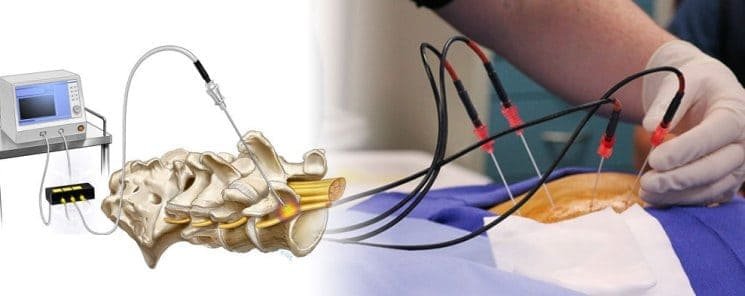Can Radiofrequency Ablation Resolve Your Back Pain?
Living with chronic back pain can be debilitating, impacting your daily activities and overall quality of life. Traditional pain management solutions, such as medications or physical therapy, can help, but they often offer temporary relief. However, there's a more advanced and longer-lasting solution you may not have considered:
Radiofrequency Ablation (RFA). In this post, we'll delve into how this treatment can provide extended relief, its place in a comprehensive pain management plan, and what to expect during the procedure.
Radiofrequency Ablation Provides Extended Relief
Radiofrequency ablation isn't a new technology, but its application in treating chronic pain, especially back pain, has seen a surge in recent years. So, how does it provide longer-lasting relief compared to other treatments?
Targeted Approach: Unlike general pain medications that affect the whole body, RFA targets specific nerves responsible for transmitting pain signals to the brain. By heating these nerves with radiofrequency waves, their ability to send pain messages is interrupted.
Long-lasting Effects: Once treated, the effects of Radiofrequency ablation can last anywhere from six months to over a year, depending on the individual and the severity of their pain. This duration is considerably longer than most traditional pain management solutions.
Minimal Side Effects: Given its targeted nature, RFA doesn't produce the side effects typically associated with systemic pain medications, like dizziness or stomach issues.
RFA as Part of a Comprehensive Plan
While Radiofrequency ablation can offer substantial relief, it's most effective when integrated into a holistic pain management strategy. Here's how RFA complements other treatments:
Combined with Physical Therapy: After an RFA procedure, patients might find it easier to engage in physical therapy sessions due to reduced pain. This can further enhance mobility and overall health.
Reduced Medication Reliance: With the lasting relief RFA provides, patients may decrease or eliminate their reliance on pain medications, leading to an improved overall health profile and fewer side effects.
Tailored Approach: Everyone's pain is unique. Combining RFA with other therapies allows medical professionals to create a tailored pain management plan that addresses individual needs and concerns.
RFA: What to Expect
Understanding what happens during and after a Radiofrequency ablation procedure can help allay any anxieties you might have.
The Procedure: During RFA, a local anesthetic numbs the area. A needle, guided by X-ray, is then inserted near the problematic nerve. Once positioned, a radiofrequency current is passed through the needle, heating and "ablatively" treating the nerve. The procedure typically lasts less than an hour.
Recovery: Most patients can return home the same day, with many resuming normal activities within 24 hours. There might be some initial soreness at the injection site, but this tends to subside quickly.
Post-procedure Care: Your healthcare provider will give guidelines about activity levels, pain management, and follow-up appointments. It's essential to adhere to these instructions to maximize the benefits of the treatment.
Results: While some people might experience immediate relief, for others, it might take a couple of weeks to notice a significant reduction in pain. The relief from RFA can last from several months to more than a year.
Conclusion
if you're grappling with persistent back pain and seeking a longer-lasting solution, Radiofrequency ablation could be a game-changer. By providing targeted, long-term relief, it can drastically improve your quality of life, enabling you to get back to doing the things you love without the shadow of pain. As always, consult with professionals like those at Texas Interventional Pain Management to determine if RFA is right for you.

